The moment I was well enough to travel again after the nasty illness that nearly broke me in San Juan del Sur, Nicaragua, I was on a bus to Costa Rica, ready to forget all my woes and embrace la pura vida.
Mak had been in Costa Rica for a number of days by that point, intent on seeing as much of Central America as possible in his limited time frame. I couldn’t blame him; we’d never agreed to stay together at all times and I would have felt guilty asking him to postpone his trip on my account.
I hadn’t done much research about Costa Rica prior to our trip (I’m a fly-by-the-seat-of-my-pants kinda girl) and as such was impartial to which destinations I visited. The decision to skip the Pacific coast beaches and reunite with Mak in the mountain town of Santa Elena instead was a no-brainer; after all that I’d just been through in Nicaragua I was desperate for the comfort only a 9-year friendship could provide.
It took an entire day of traveling and no fewer than five buses to get across the border and up the bumpy mountain roads to the tiny town of Santa Elena. I received the warmest of welcomes from my travel buddy and the amicable staff at Pensión Santa Elena; I was confident that my luck was finally beginning to turn around.
Despite its diminutive size, there’s plenty to keep visitors busy in Santa Elena; we were given the full rundown of our options, none of which were particularly budget-friendly, but we’d come for the wildlife and adventure activities so damn it, that’s what we were going to do.
Perhaps more well-known than Santa Elena is neighboring Monteverde, a Quaker settlement and major ecotourism destination. Home to several nature reserves including the Monteverde Cloud Forest Reserve (recently named one of the Seven Natural Wonders of Costa Rica), Monteverde attracts visitors looking to learn about some of the country’s incredible biodiversity. The region is home to over 100 species of mammals, 400 species of birds, tens of thousands of insects (and, you know, those gigantic furry tarantulas) and 2,500 plant varieties–and 420 of those are orchids!
I still wasn’t feeling 100% healthy, so I suggested the least strenuous option for the following morning: A tour of the Monteverde Cloud Forest Reserve.
The entrance fee is a bit steep–$18 for foreigners–and the cost of hiring a guide is an additional $15 (one day in Costa Rica and my wallet was already feeling the pinch). Guests can wander the reserve independently, but it’s highly recommended to do a guided tour to get the full experience.
Our guide, Sergio, turned out to be the most amazing tour guide we could have asked for. He was a serious nature geek in every sense–his extensive knowledge of the forests, the plant and animal species, and conservation issues blew my mind throughout our 2.5 hour tour. He even mimicked bird calls like a pro! He’d been working at the reserve for a total of five years, both conducting research and guiding tours. He oozed with passion for what he did, and it was contagious.
On top of all that, he was astonishingly deft at spotting forest creatures and interesting flora hanging out high up in the forest canopy and even used his telescope to get us close-up shots of what we saw using our iPhones! And between you and me, internet, there’s something I find incredibly sexy about a guy who can say “sexual dimorphism” in multiple languages (iiiis that weird?).
We arrived at the reserve by taxi and our tour began just after 7:30am. The biodiversity made itself immediately apparent; before we’d even entered the park we saw a gorgeous green scarab (or a forest brooch, if you will) on a tree near the ticket office.
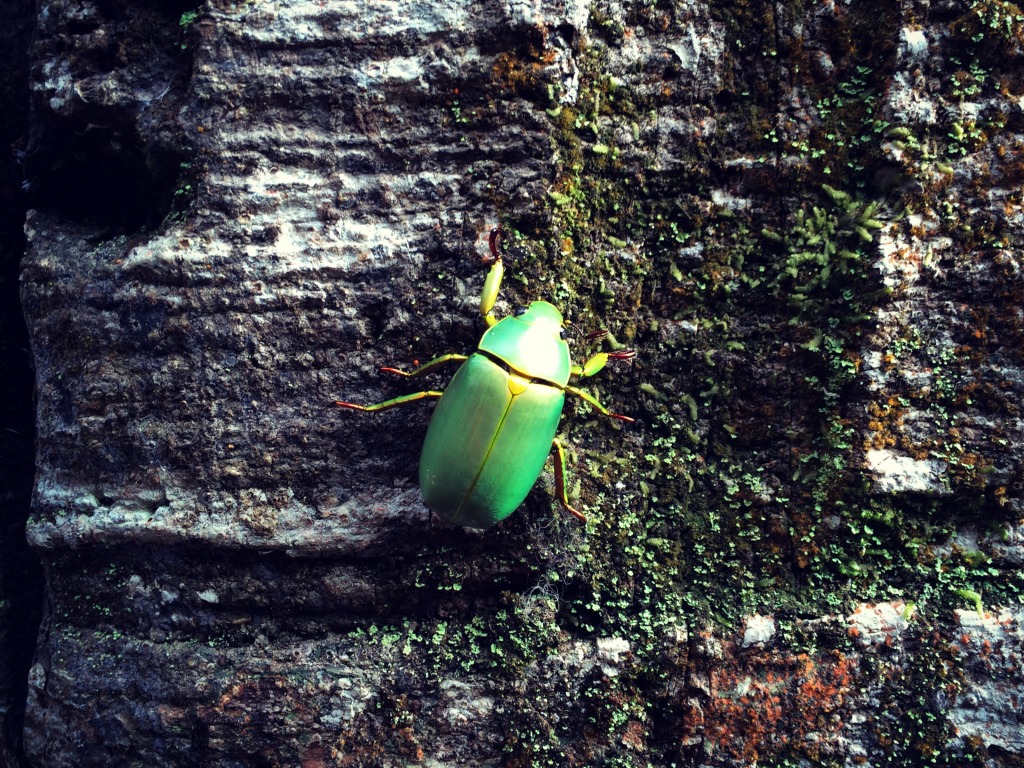
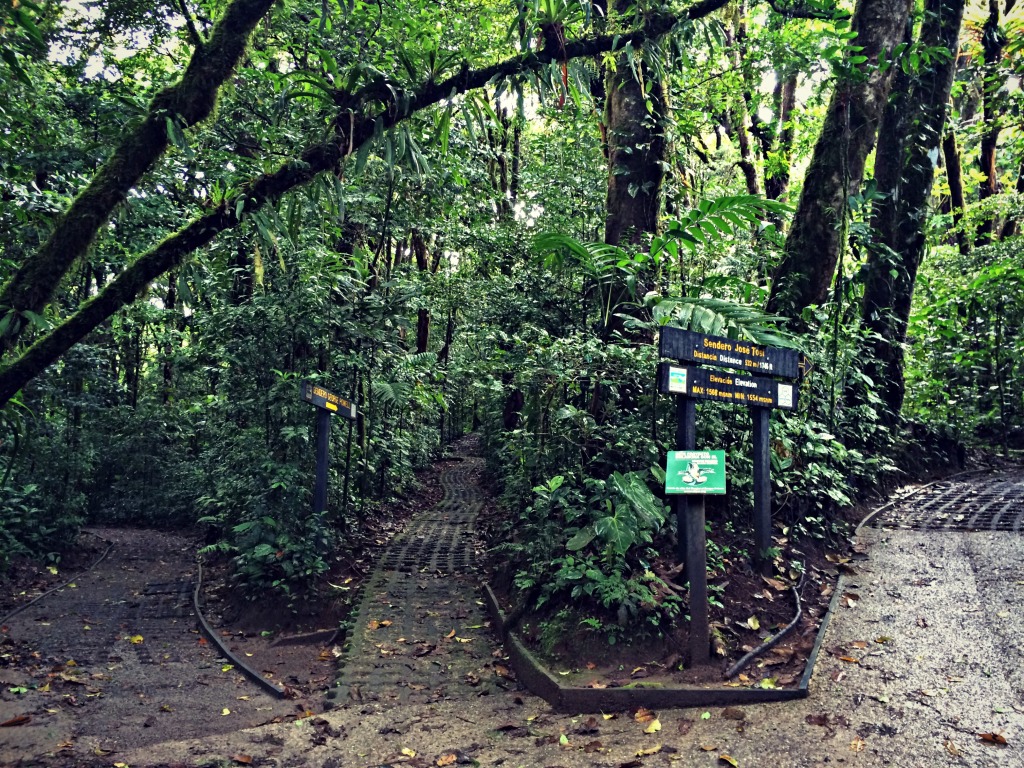
Once inside, my head swirled trying to keep up with all the knowledge Sergio was dropping on us: epiphytes are the plants that grow above the forest floor; strangler figs literally strangle and kill their host trees; birds sometimes form temporary mixed-species flocks to better defend against predators; hummingbirds build their nests in spiky trees to keep monkeys from stealing their eggs, and some hummingbird species migrate to Costa Rica ALL THE WAY FROM NORTH AMERICA. Every new piece of information was somehow more fascinating than the last; I could have listened to that guy talk all day.
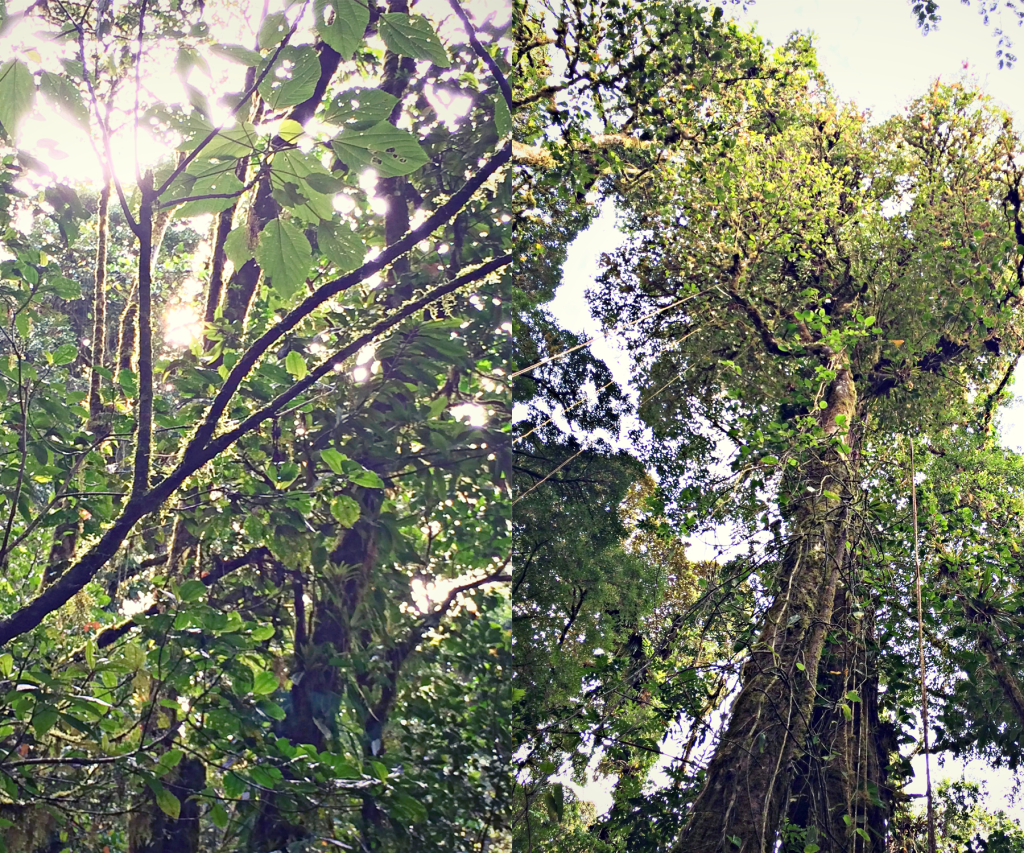
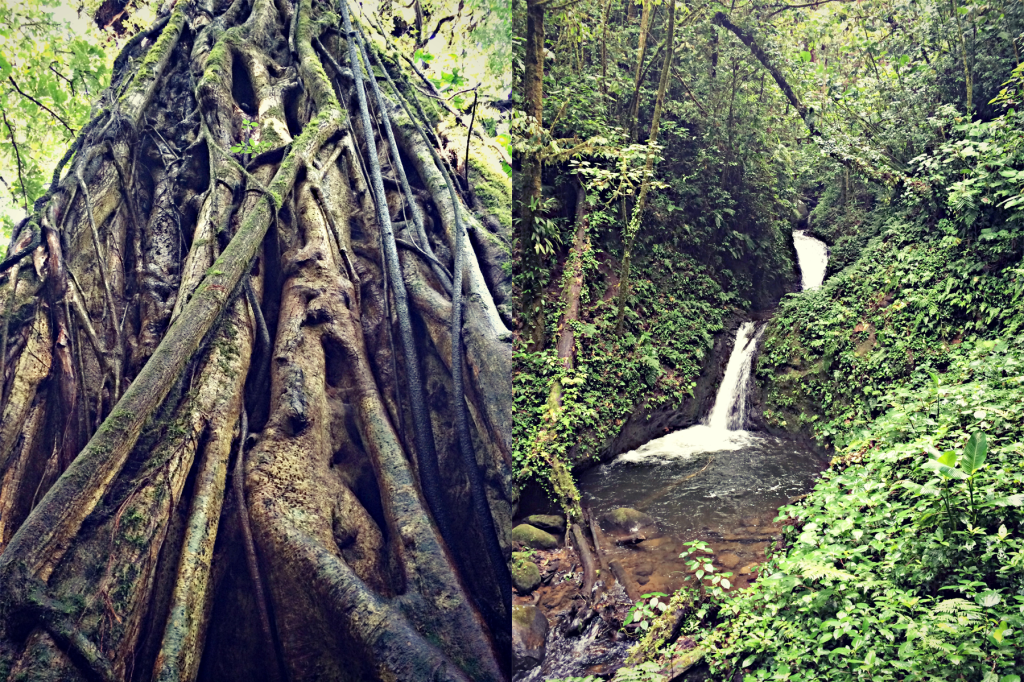
We saw more plants and animals than I could possibly keep track of, including a green viper and the hairy legs of a few sleepy giant tarantulas. Much to my own surprise I would have liked to see the tarantulas out and about, but unfortunately they are among the nocturnal forest creatures; they do offer a night tour but we had no plans to take one.
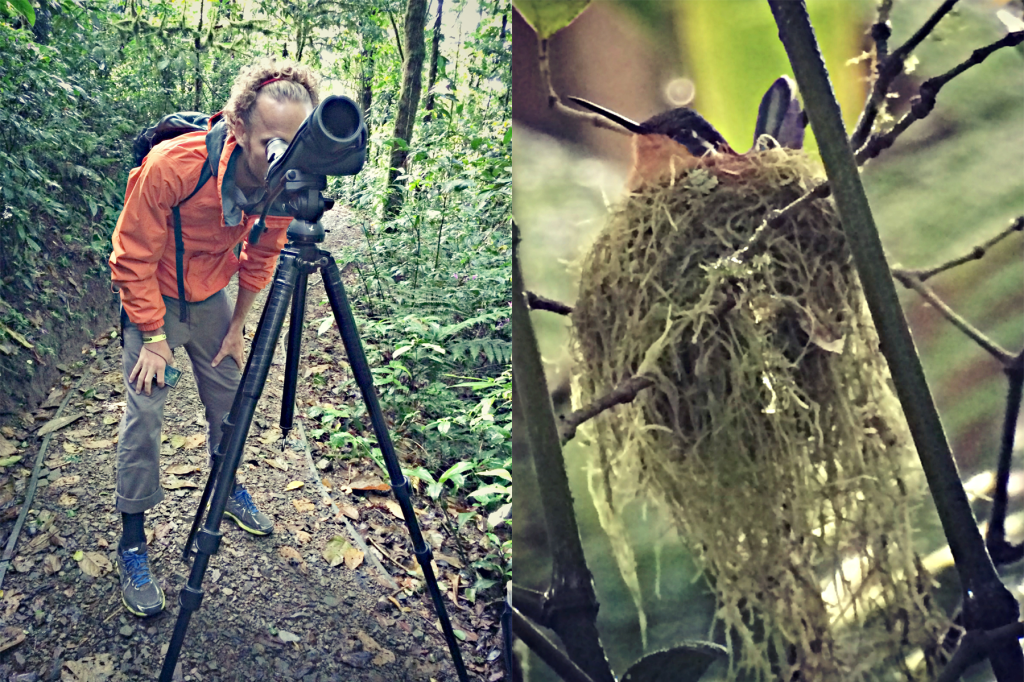
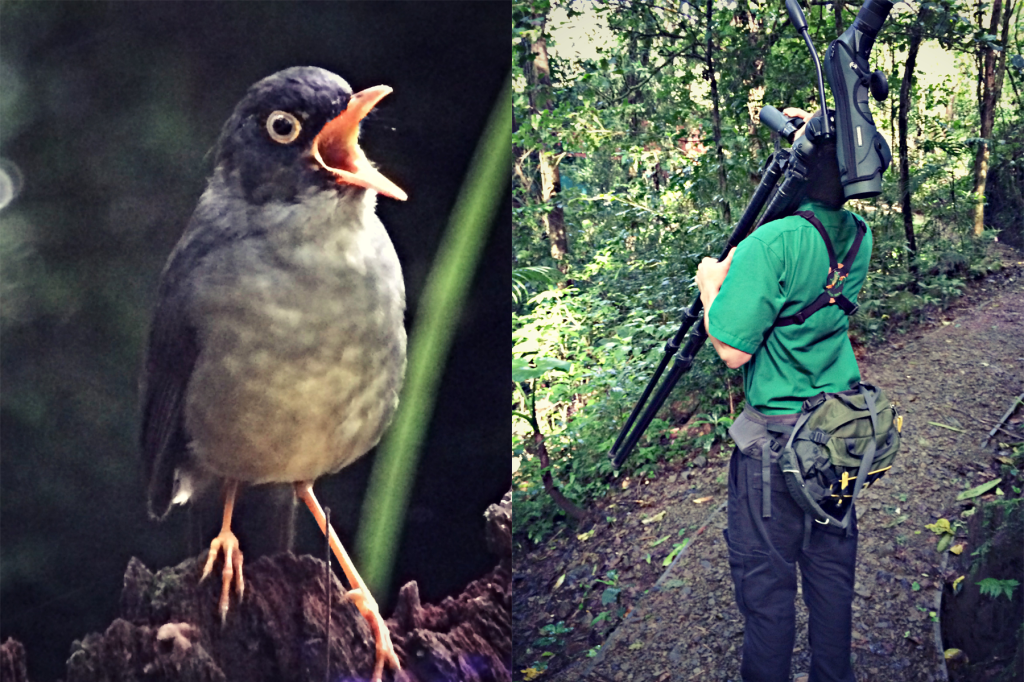
Toward the end of the tour, we got exciting news from another guide; they’d spotted the bird Monteverde is famous for, a crown jewel of the birding world, the Resplendent Quetzal (funny side note: for awhile Mak didn’t know “resplendent” was part of the bird’s name; he just thought Sergio really loved this bird). We high-tailed it to another part of the reserve and were rewarded with a rare sighting of this crested beauty.
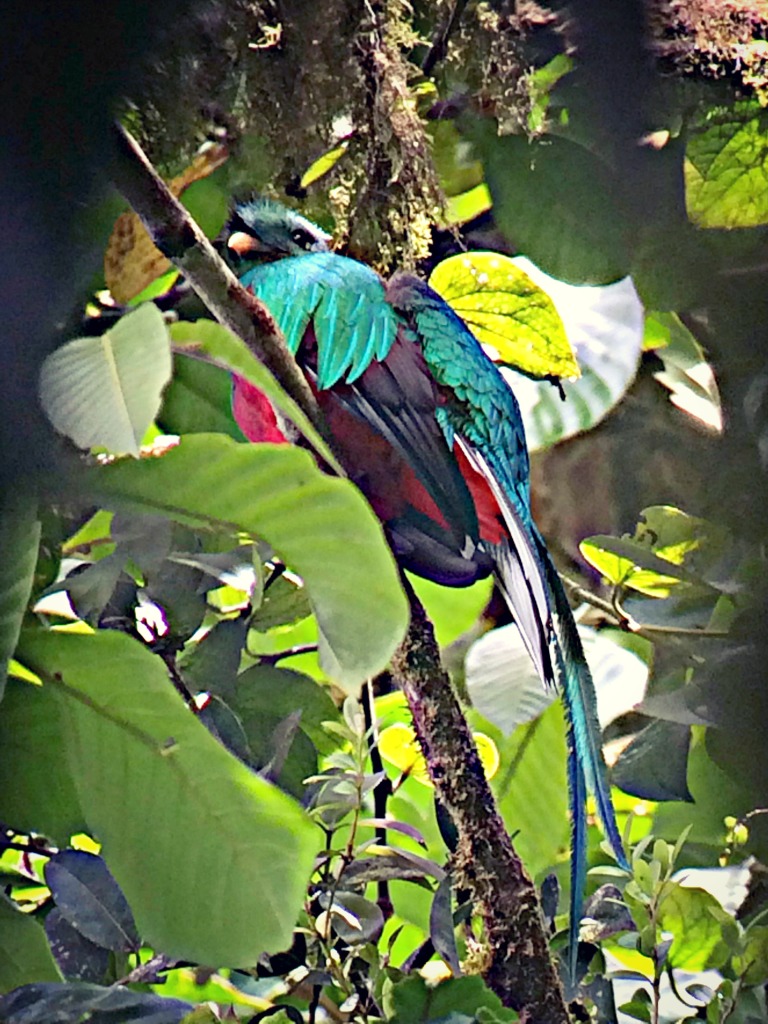
Our tour of the Monteverde Cloud Forest Reserve was worth every last cent. We would have been remiss to visit Costa Rica and not do a wildlife outing of some kind. If you find yourself in Monteverde, I highly recommend this tour. Ask for Sergio.
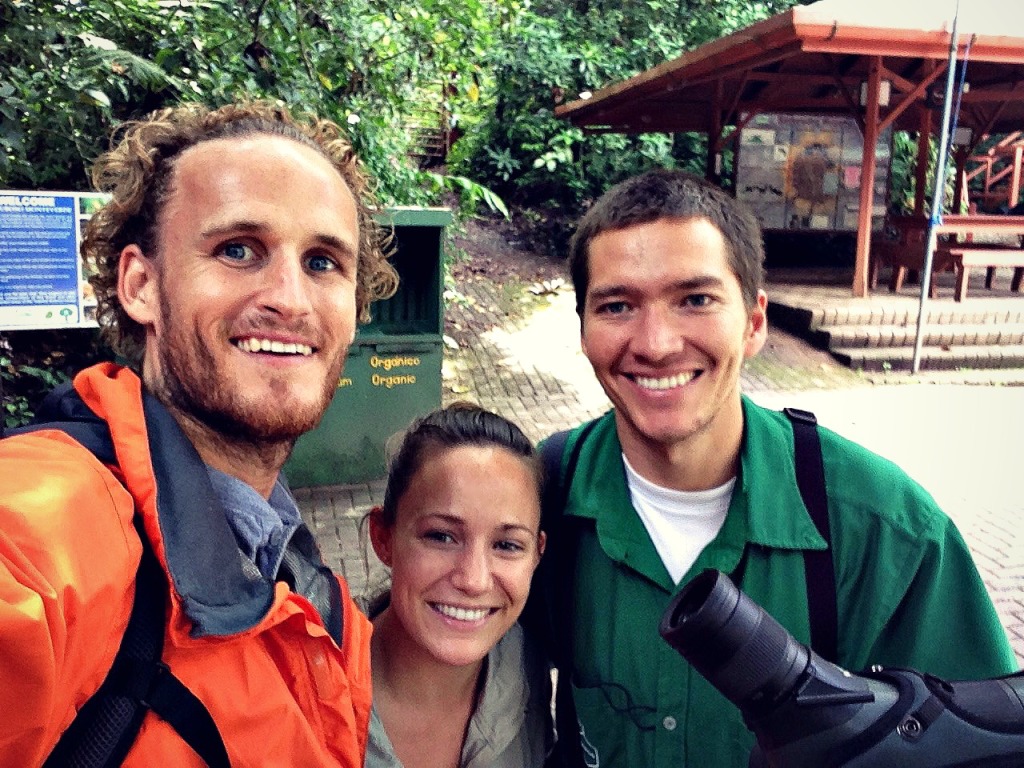
Tips for visiting the Monteverde Cloud Forest Reserve
You can get to the reserve from Santa Elena by bus or taxi. The bus is cheaper, but you have to catch it at 6:15am to make it in time for the tour, so a taxi allows for more flexibility (and by flexibility I mean sleeping for an extra hour).
But don’t oversleep! Tours leave promptly at 7:30am and you don’t want to miss out on having a guide; it definitely made the experience for us.
Bring a rain jacket and a few layers; the temperatures can be brisk in the mountains and rain is always a possibility.
If you are a student, bring a valid student ID to pay a significantly cheaper entrance fee ($7 instead of $18).
If you don’t have a good zoom lens on your camera, bring your smartphone–real cameras don’t work as well for telescope photos like the ones above.
When the tour is over, hike up to the lookout point (called La Ventana) for a great view from above the trees.
If you love your tour, don’t forget to tip your guide.
This was easily my favorite guided tour yet.
What’s been your best tour experience?



